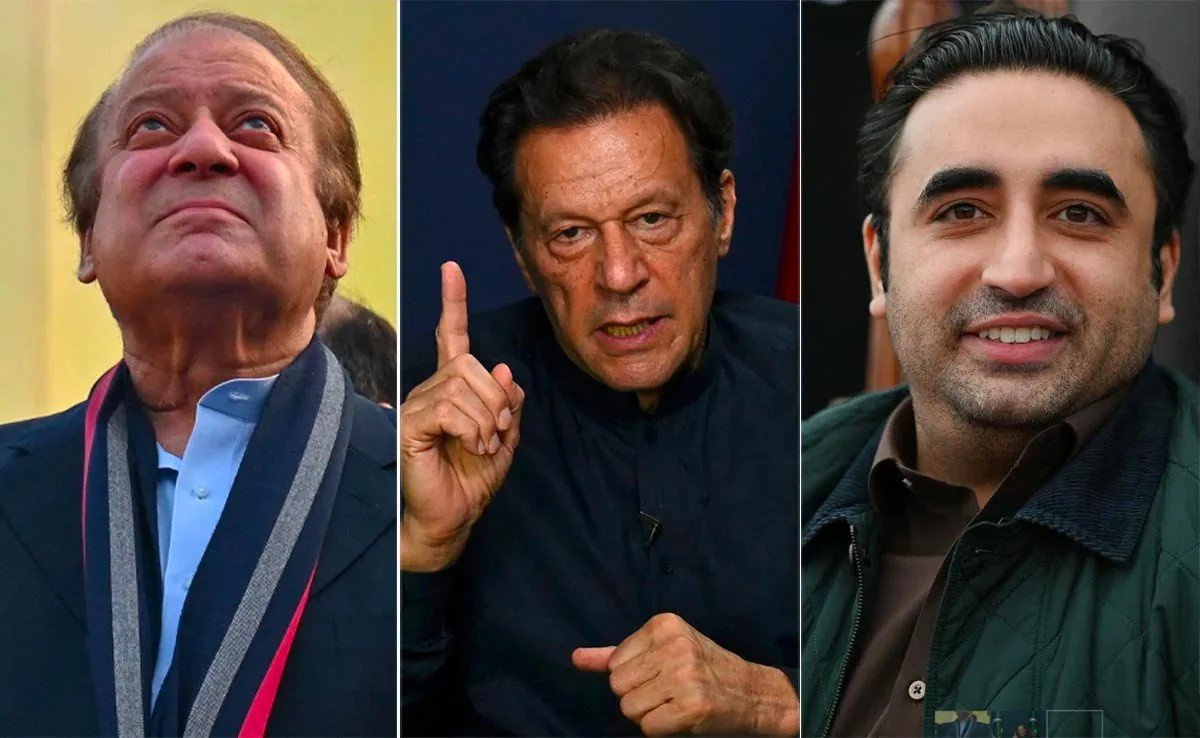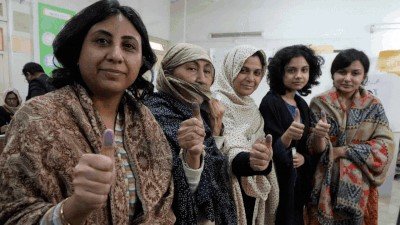Pakistan held a parliamentary election on Thursday, February 8 to elect a new National Assembly and provincial assemblies. This high-stakes vote took place amid a polarized political climate, a recent pattern of militant attacks, and an economic crisis.
When and Where the Election Took Place?
The general election was conducted across Pakistan on Thursday, February 8th, 2024.
Around 128 million registered voters were eligible to cast ballots at more than 95,000 polling stations to directly elect 266 members of the National Assembly.
An additional 70 reserved seats were allotted based on the number of seats each party wins.
Key Candidates and Parties
The main contest was viewed as being between former Prime Minister Imran Khan’s Pakistan Tehreek-e-Insaf (PTI) party that won the 2018 election and the opposition Pakistan Muslim League-Nawaz (PML-N) led by Nawaz Sharif, a three-time former premier.
Khan, a former cricket star, was removed by a no-confidence vote in 2023 but remained popular. Sharif remained influential even while in exile in London facing corruption charges. His brother Shehbaz became prime minister after Khan’s ouster.

Another key contender was Bilawal Bhutto Zardari, son of assassinated former PM Benazir Bhutto. His left-leaning Pakistan Peoples Party (PPP) hoped its strong base in Sindh province could expand nationally.
Smaller conservative religious parties also vied for influence. A central issue was tension between populist reformers and established political dynasties. Regional dynamics were also important.
Pakistan Election Conduct and Security Concerns
This hard-fought election took place amid global concerns over fairness and violence. The military, which has staged several past coups, was viewed as a key power broker. Militant groups posed security threats during campaigning.
On election day itself, the campaign period and election-day moratorium on weapons display were strictly enforced.
Independent observers monitored polls, ballot counting and aggregation of results. Significant technology and administrative improvements were implemented to enhance voting access and verifiability.
Nonetheless, sporadic violence occurred and fears remained over tampering.
Pakistan closed mobile networks temporarily as a security measure, disrupting communication. Turnout appeared lower than expected at under 50% as tensions kept some voters away.
Results and Outcome
As vote counting concluded, no party appeared positioned to easily form a majority government.
The PML-N held an edge for the most National Assembly seats but may need coalition partners. PTI and PPP exceeded expectations in provincially strategic areas. Smaller conservative parties could be kingmakers.

Most experts predicted days or weeks of complex post-election maneuvering before naming a Prime Minister.
Nawaz Sharif remained ineligible due to criminal charges but could exert authority behind the scenes if PML-N leads.
Imran Khan vowed to mobilize supporters if dissatisfied with results. The military’s preferences were unclear.
Ultimately the strategic regional calculus meant the next government in Islamabad, regardless of specific composition, must balance relationships with both China and Western powers.
Pakistan’s ability to address debt, inflation, healthcare, education and infrastructure needs also hung in the balance along with hopes for political stability after a turbulent 2023.
Read about the current UCC Bill passed in Uttarakhand.











